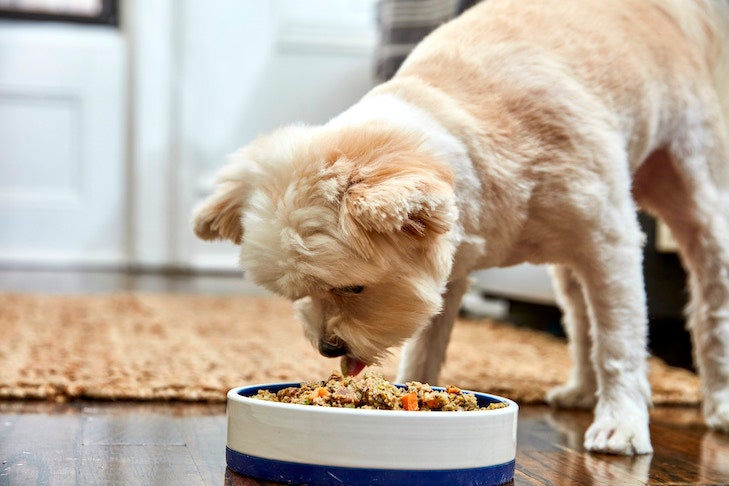Food for Big Puppies & Little Puppies
There are differences between the nutritional needs of small-breed and large-breed dogs, and that is especially true for puppies. Adult dogs who weigh less than 20 pounds are considered small-breed dogs. These puppies grow quickly and may reach adulthood by 9 months. Large-breed puppies (20 pounds and up), grow more slowly—it takes anywhere from 15 to 24 months to reach full size and maturity.
What Affects How Often a Dog Should Eat?
Veterinarians recommend feeding a dog at least twice per day. Dogs with medical issues or dietary needs may require specialized feeding schedules or restrictions on what they eat. Talk to your veterinarian about your dog’s eating habits to make sure you’re meeting their nutritional needs and healthcare requirements.
Breed plays a large role when deciding how often to feed your dog. Common large breed dogs, for instance, will often require more feedings and more calories per day than medium and small breed dogs. Age is also another important consideration. The caloric requirements for a two-month-old Yorkshire Terrier varies greatly compared to a two-year-old Yorkie.
A fresh meal service like Ollie helps change your feeding approach as your dog changes ages from puppy to adult so you don’t have to worry about portions during different life stages.
Since puppies are growing rapidly, they need more food than adult dogs. Puppy nutrition is crucial for developing a foundation for future growth, as well as their bone and organ development. Puppies must have a specific amount of calcium in their diet, otherwise, they can develop metabolic bone disease or orthopedic conditions like early-onset arthritis. Toy-breed puppies, in particular, are prone to hypoglycemia.
Puppies need small, frequent feedings. For the first few months of a puppy’s life, they will need small meals of food throughout the day as they transition from their mother’s milk to solid food. Starting around four months, puppies can begin eating about three times a day, and after that, puppies will quickly graduate to twice-a-day feedings.

Feeding them three or four times per day makes it easier for puppies to digest and help keep energy levels consistent. However, it’s important to not overfeed them, since overweight puppies are more likely to become overweight adult dogs.
Toy-breed puppies will need 4 to 6 meals per day for the first three months of their lives. Medium-breed puppies will require three meals per day, and large-breed puppies typically need 3 to 4 meals per day. Though the breed is an important consideration, metabolism and energy levels can vary by up to 30 percent. Therefore, you’ll need to proportion meals accordingly.
Even though puppies grow quickly, it’s important to keep caloric intake and food amount consistent from four to twelve months of age. Puppies use fewer calories for growth as they become older. This comprehensive puppy feeding chart has vet-recommended guidelines on how much and how often to feed your puppy.
Wet food contains additional moisture
As the name implies, wet food contains more moisture than dry food. This is helpful for pups who don’t drink enough water and are prone to dehydration. It can also be important for dogs who have kidney issues. If you think switching to wet food might help with your pup’s medical condition, talk to your vet before making dietary changes.